ATtiny3224/1624/1614 breakout board, Arduino compatible
Designed by Azduino by Spence Konde in United States of AmericaThis seller is taking a break. Sign up below to get an email when they're back!
No shipping info available.
Set destination country to see options
Shipping to starts at
Free shipping is available to !
Ships from
This item does not ship to .
More Info
Sign up and we'll send a reminder when the seller returns!
Last Chance Sale: Prices on "Last Chance" variants cut While supplies last, get a free Rev. D bare PCB with the purchase of any "Last Chance" board. Convenient, basic development/breakout board for …
Read More…While supplies last, get a free Rev. D bare PCB with the purchase of any "Last Chance" board.
ATtiny\d\d?[012]4 can be mounted on the bare board (available here, as those are all pin compatible 14-pin parts made in SOIC. These are not usable with the new EB14 or DD14 parts - we'll be introducing new boards based on those soon.Over the past half decade Atmel/Microchip has been releasing AVR microcontrollers based on an all new set of peripherals, the megaAVR 0-series and tinyAVR 0/1/2-series, as well as the newer Dx-series. These use the familiar AVR instruction set and open source avr-gcc compiler used with the classic AVR microcontrollers, but with redesigned and more capable on-chip peripherals and highly competitive prices. The AVR instruction set has been given a significant performance tuneup, with a handful of the most important instructions executing in a single clock (push, pop, std, call, rcall) plus sbi and cbi are now single clock instructions. It se happens that the memory access instructions are the most used instructions so code runs slightly faster. The best known of this new line of chips (among hobbyists, at least) is the ATmega4809, used on the Arduino Uno WiFi Rev.2 and Nano Every. However, there is also an extensive line of tinyAVR parts based on this new architecture, ranging from 8-pin to 24 pin packages, with up to 32k of flash and 3k of RAM (yes, an ATmega328p would back away slowly if it met one in a dark alley).
With my megaTinyCore, there is full Arduino IDE support for these, and almost all libraries are either compatible, or have a compatible bundled version included with the core.
Even more exciting, the 2-series (with a 2 in the tens place) introduces the first true differential ADC with programable gain on an avr since the tiny841 - resolution was improved to to 12 bits from 10, accepted voltages range can go a fraction of a volt outside of the power rails for high side current sensing and similar applications, and features 1024-sample automatic accumulation, allowing oversampling and decimation to reach 17 bit accuracy (though the lower bits in that case depend on careful power supply and reference decoupling). With the release of the 3224, we've dropped the 1604, which was a strictly worse version of the 1614 with about the same price tag. So we now carry assembled boards with the 3224, 1624, and 1614 (the parts are available down to 4k with the 2-series and 2k on 0/1-series - but for piddling discounts that only matter if you're making thousands of them. )
All of these breakout boards come equipped with your choice of 3.3v or 5v regulator (LDL1117) so that it can be supplied with an external supply higher than it's operating voltage (minimum dropout as low as 0.35v - maximum power dissipation can be around 1 watt in the regulator); the input to the regulator is the two pins in the lower left corner. an LED (on pin PA3), and a UPDI programming header (with the 470 ohm resistor on the board to allow safe programming using programmers like many self-made JTAG2UPDI units that did not include any such resistor (this can be bypassed with the RBP solder bridge jumper on the back). There is a 1x6 pin "FTDI"-style serial header on the bottom edge of the board. Autoreset circuits are included, but except on the older boards, these components (10k resistor, 0.1uF Cap, and a diode in SOT23 package) are not installed because of the awkwardness of their use - there is a single pin that can be ether reset or UPDI, but not both: To program a board set to enable reset with UPDI (for example, to turn the reset pin back into UPDI, an exotic HV UPDI programmer is needed.
All pins are broken out, and there are 3 Vcc and 3 Gnd pins available, plus the ones on the UPDI and Serial headers so even if you're not using breadboard, you can still easily connect power and ground for multiple external devices.
Board dimensions are 1.4" x 0.75" with the rows of pins 0.7" center to center for the Rev. B. Rev. D boards (with the darker solder mask for more readability) are slightly narrower, with the rows of pins 0.6" center to center, so you can use them with wide SOIC sockets or should you wish to.
These boards have pads for a 3225 external clock if desired. We previously planned to offer to install these, but since the boards came back and passed tests with external clocks we tested with, we have not been able to source suitable external clocks in 3225 packages which are rated to work over more than a very narrow range of voltages. Knowing what voltage it will be run on (which I don't know) in some cases you can find a suitable clock, other times not really - but it is incredibly rare to need a better timebase than the internal oscillator, which is often within half a percent out of the box. So yeah, not as useful as i'd hoped. They were available when I designed the board, I swear!
[This is available as a bare board (supporting all the x24, x14 and x04 parts) here.]
analogReadEnh(pin,17); ("enhanced analog read of 'pin' to 17 bits of resolution") - or if you wanted that to be a differential reading? analogReadDiff(positive_pin,negative_pin,17); You wanted to amplify that by 16x using the PGA too? `analogReadDiff(positive_pin,negative_pin,17,16); - there is a detailed reference for the exposed functions surrounding the ADC included with the megaTinyCore readme Of course, analogRead(pin) will still by default give you a 10-bit reading, though you can, as usual, switching between the resolutions supported in hardware for a single conversion (8 or 12 - the 10 is a compatibility shim that takes a 12 bit reading and drops the two LSB). Note that I make no claims as to how many of those extra bits you get from oversampling and decimation are noise vs signal - it doesn't take much to throw off a 17-bit ADC measurement. In addition to the usual amenities to be expected for Arduino cores, we've included support for tuning the oscillator. See our tuning doc for the full details, but this permits significant overclocking with the internal oscillator, as well as wacky speeds like 14 MHz if you like making life harder on your self, and we support dividing the speed down as low at 1 MHz
We also sell a board in the same spirit for the 24-pin (ATtiny parts with part numbers ending in 07, 17, or 27) and 20-pin (ATtiny parts with part numbers ending in 06, 16, or 26) 0/1/2-series tinyAVR parts, and for the 8-pin (part no. ending in 02 or 12) 0/1-series ones. Bare boards are also available in those sizes as well.
In some of the pictures shown above, the boards are shown with pin header (not included) attached. We recommend:
We offer an optional colored pin header kit containing:
There are two approaches to programming these parts:
Unlike "classic" AVR microcontrollers, these new parts are programmed via a "UPDI" single wire interface instead of the SPI-based ICSP protocol. You can easily make a UPDI programmer from (almost) any serial adapter with a schottky diode or 4.7k resistor, (I found that the diode worked far better - some people disagree and the matter has not yet been fully explained). As of the most recent releases of my megaTinyCore which improved performance using this method (it now leaves jtag2updi and Microchip's official programmers in the dust), this is what we recommend; see the instructions here;
The 2.4.0 release has further improved compatibility with a wide range of serial adapters by ensuring that the non-TURBO mode (turbo mode being "go faster at all costs, including buying inexpensive serial adapters (Blue DeekRobot FT232RL and black CH340G with voltage switch are both great adapters for this); the DeekRobot RT232RL boards even have an A that don't suffer from implicit latency) does not implicitly use the USB latency to give the chip a chance to perform the page write, making it work with (almost) all adapters. The performance will fixed back up in a future version to get rid of most of the performance penalty (up to 1 second per upload).
Make UPDI programmer from either a serial adapter and a diode, or a Nano/ProMini/Uno
The order of the pins on the UPDI header is UPDI-Gnd-Vcc - this means that if the programmer is connected backwards, the board will not be damaged. The 470 ohm resistor is compatible with all three of the most plausible options: SerialUPDI ( resistor is on the breakout board; you do not need to (and should not) use another one.
A typical development configuration might have the board connected to a serial port via the 6-pin serial header for serial debug, and to the UPDI programmer via the 3-pin header for uploading new code (as shown in the pictures). This is generally how we use it, and is what we recommend.
The Optiboot bootloader is supported for all parts; this works with an external serial adapter (like the 6-pin ones used for the Arduino Pro Mini). Optiboot takes up 512b of flash for the bootloader. In addition to obliviating the need for a UPDI programmer to upload sketches (though note that the same serial adapter could also be used as a UPDI programmer, Optiboot allows you to use the same port for upload and serial monitor like a normal Arduino board.
There are two general approaches to using Optiboot on these parts:
Without auto-reset, UPDI enabled. On all boards that do not support auto-reset, and on boards that do if this option is selected, the UPDI/Reset pin will be left as UPDI, and the board can be freely reprogrammed via UPDI. The version of the bootloader installed will be active for 8 seconds after power on, or after a WDT or software reset. So for example, to upload, you would verify sketch, unplug, plug back in, and then upload - or alternatively, you could adapt your sketch to trigger a software reset. UPDI programming will still be possible. Note that for these boards, you must use UPDI to "burn bootloader" with the non-optiboot board definition selected if you want to switch back to uploading sketches via UPDI
With auto-reset, no UPDI. On boards which do support auto-reset (if using optiboot), you may elect to order the board with or without that enabled. If it is, the bootloader will not run on power on; it will only run after a "hardware reset" - it will not run after a normal power on reset. Only after external (reset pin) or software reset; this mimics the behavior of a classic bootloader on (for example) an ATmega328p, and coupled with autoreset provides a very smooth user experience. Warning: This comes with a very large downside: if this option is chosen, you cannot reprogram the board via UPDI unless you use an "HV UPDI" programmer. The RST_EN solder bridge must also be disconnected prior to that.
A third approach is to upload sketches which all have a means of triggering a "software reset" from within the sketch, either from a pin interrupt (the existing autoreset parts could be wired to this pin). With other trigger mechanisms, this could be used in more advanced deployments, such as a device at the far end of a serial line, which resets in response to a specific command0). These schemes allow one to use the bootloader without power cycling the board while also permitting use of UPDI programming - however because they depend on the sketch, they are inherently more "brittle", and that UPDI programming option may become necessary to revive boards during development - in the event of bugs in the application. This method is beyond the scope of this product listing.
If purchased without the bootloader installed, if you later decide that you want it, you may install it using a UPDI by doing burn bootloader (if using autoreset and UPDI pin set as reset, the jumper on the back must be closed after bootloading); this pre-bootloading service is intended only as a convenience.
Boards with optiboot preinstalled are bootloaded at the time the order is received. All boards are set to 20-MHz speeds
More information on Optiboot and the tinyAVR 0/1/2-series parts is available in the megaTinyCore documentation.
The linear regulators offered can provide a regulated operating voltage provided Vin in at least 1.3v (ZLDO1117) higher than the operating voltage. These regulators are appropriate when your current requirements are relatively low, and you have access to a power supply with a voltage higher than the operating voltage (max 18v input) - maximum power dissipation, however, is only ~ 1.2W without adding heatsinks, (that is to say (Vin - Vout)*(current) < 1.2W) so the practical maximum current is much lower.
Example calculations of maximum current when using the regulator:
Vin=12v, Vout=5v. Vin-Vout=7V. 7V*I < 1.2W -> I < 1.2W/7V -> I < 170mA
Vin=7v, Vout=5v. Vin-Vout=2V. 2V*I < 1.2W -> I < 1.2W/2V -> I < 600mA
Only the Vin pin goes through the regulator - all other Vcc pins (including the UPDI and FTDI headers) are connected directly to the Vcc rail - so if you have a 3.3v regulator, but connect a 5v serial adapter's 5v line to the board, the board will be running at 5v (this will not harm the board itself, as long as the voltage does not exceed 5.5v - but if you have 3.3V devices connected to it, those may be harmed, so if you have any of those connected, you must use a 3.3v serial adapter, or disconnect the 3.3v parts during programming. and not connect the 5v pin of the serial adapter (the data lines are fine, as serial adapters almost universally have a 1k - 2.2k resistor in series with the TX line, while the RX line is only weakly pulled up and can be handled by the protection diodes which will limit the current to a non-dangerous level, or disconnect the 3.3v devices from the board before connecting the 5v to the board's Vcc), whereas if you supply 5v to the Vin pin of a 3.3V board, the board will be running at 3.3v. The regulators we use have astonishingly low dropout voltages; you will lose little if any voltage, even with just 3.7v powering a 3.3v board! (typ full load dropout spec'ed as 350 mV.
However - a regulator has a quiescent current that it draws to power itself The LDL1117 we use now burns around 0.25-0.4 mA. This is an order of magnitude better than most 1117's, but its still multiple orders of magnitude more than these chips will consume in sleep. Hence, if you are running on batteries and using power saving techniques, you want to avoid having a regulator on the board if possible. For example, if running off a LiPo/LiIon battery at 3.7~4.2v, you could set it to run at 10MHz, and use no regulator - approximate power use with a regulator (whether or not you power through the regulator or connect power direct to Vcc), the sleep mode power down current will be ~0.25mA (almost all from the regulator), whereas without the regulator, current in sleep mode power down will be ~0.1uA (0.0001mA) at room temperature - that is, for a project where the chip will spend most of it's time in sleep mode power down, the battery life may be 2,500 times longer without the regulator.
If powering from batteries w/out a regulator, you need to be careful not to connect external power directly to Vcc (including from a serial adapter or UPDI programmer) while the battery is connected.
On boards where there is no regulator, the PTC fuse is still present (in series with Vin), and the regulator is bypassed by a 0-ohm resistor, so you can still use the Vin pin power the board to get the benefit of overcurrent protection. See picture 3 for an example of what the "no regulator" looks like.
Early versions of this board used a 4.7k resistor. This is an inappropriate value, this was pointed out to me before SerialUPDI existed, and since then (spring 2020) I've been shipping boards with the correct 470 ohm resistor.
No country selected, please select your country to see shipping options.
No rates are available for shipping to .
Enter your email address if you'd like to be notified when ATtiny3224/1614/1604 dev board Arduino compatible can be shipped to you:
Thanks! We'll let you know when the seller adds shipping rates for your country.
| Shipping Rate | Tracked | Ships From | First Item | Additional Items |
|---|---|---|---|---|
|
:
|
International orders have been suffering long delays due to COVID-19 - please check your country at https://about.usps.com/newsroom/service-alerts/international/ and make sure that I can ship to you, and that you are okay with any delays. There may be additional information available from your national postal service. Some customers have reported packages being delayed in transit by over a month. We cannot offer any sort of guarantees regarding international shipments at this time; we apologize for the inconvenience, and are looking into shipping internationally through UPS.
Please be sure that the address given to Tindie is accurate, and includes your street name and number - company name is only required if shipping to a commercial address. International orders require a valid phone number.
Domestic packages that go more than 1 week without a tracking update will be presumed lost in the mail and refunded or reshipped as buyer prefers. Any international packages can be delayed in customs without warning for 2 weeks or more. After 1 month without a tracking event (2 months to South and Central America - insane delays in those nations are commonplace), we will reship or refund a missing order (as you prefer). COVID-19 update: Some countries have stopped processing incoming international mail entirely -we will cancel orders to countries which we know are not processing international mail at all. This may also cause longer than usual shipping times - we are not responsible for such delays.
We do not open inquiries through the postal service - experience has shown this to be futile.
We ship all orders via USPS. UPS will be added as an option in the near future, I hope. We do all shipping through Stamps.com, and they offer me UPS, but all addresses are rejected as invalid, and I have emailed support numerous times and have had zero response. So at present, we cannot entertain requests to ship through other carriers.
Product: (5.00)
Documentation: (5.00)
Shipping: (4.67)
Communication: (5.00)
Mark | Oct. 28, 2021
Marco | Sept. 3, 2020
David | March 11, 2020
No shipping info available.
Set destination country to see options
Shipping to starts at
Free shipping is available to !
Ships from
This item does not ship to .
More Info
Sign up and we'll send a reminder when the seller returns!
somerville, MA, United States of America
Ships from United States of America.
120 Reviews | 2,333 Orders
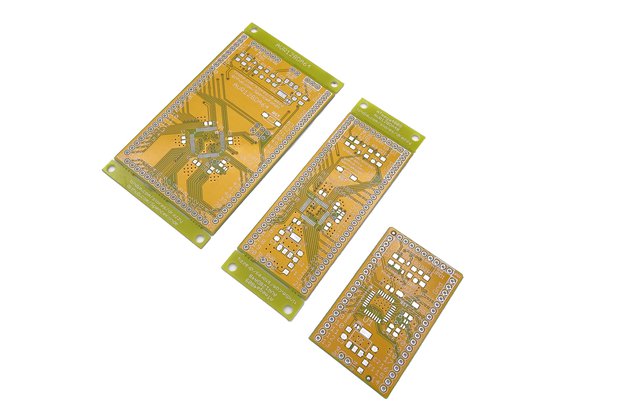
$3.95
Free Shipping!
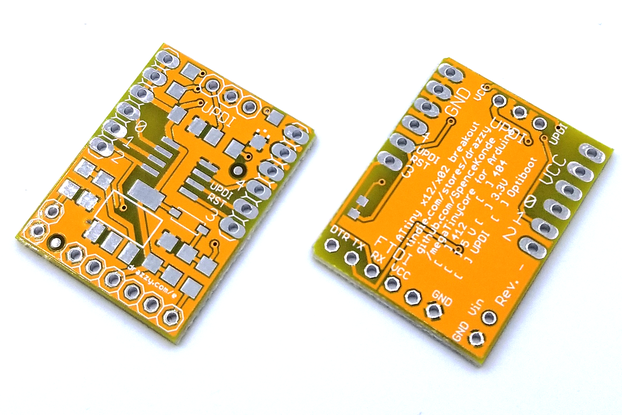
$1.70
Free Shipping!
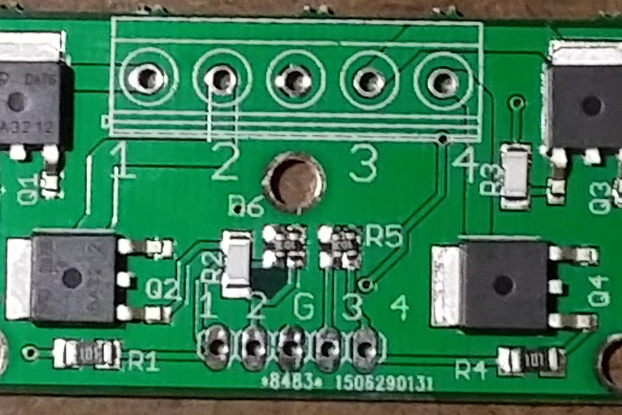
$13.00
Free Shipping!

$5.00
Free Shipping!
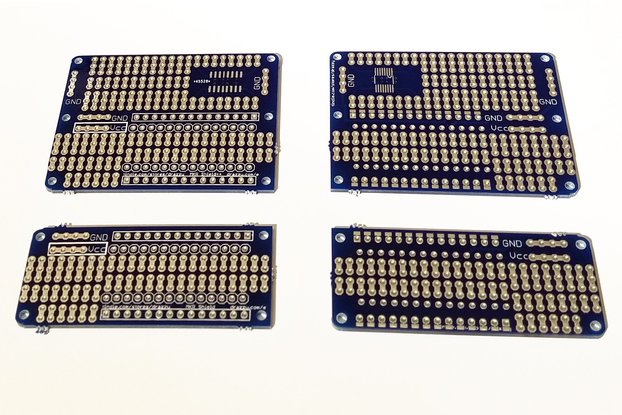
$5.50
Free Shipping!

$37.00
Free Shipping!
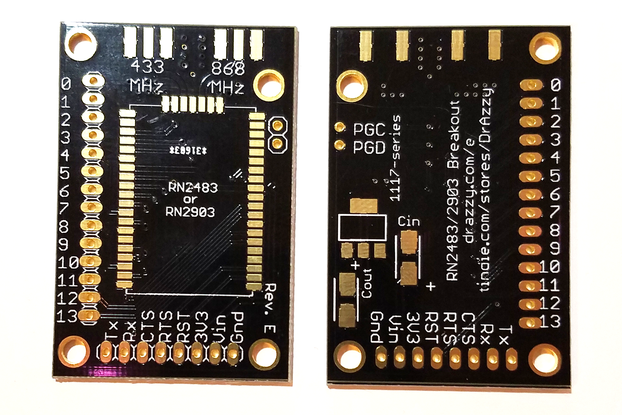
$3.00
Free Shipping!
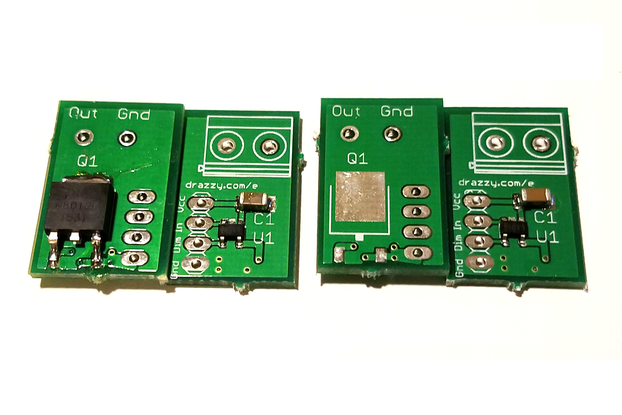
$8.00
Free Shipping!
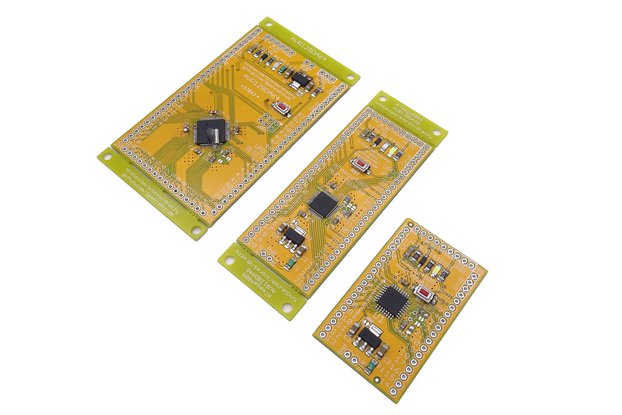
$15.00
Free Shipping!

$13.00
Free Shipping!
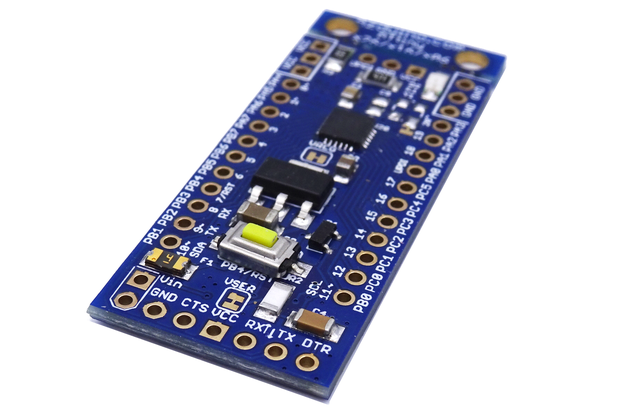
$12.50
Free Shipping!

$7.95
Free Shipping!
By clicking Register, you confirm that you accept our Terms & Conditions
We recognize our top users by making them a Tindarian. Tindarians have access to secret & unreleased features.
We look for the most active & best members of the Tindie community, and invite them to join. There isn't a selection process or form to fill out. The only way to become a Tindarian is by being a nice & active member of the Tindie community!
